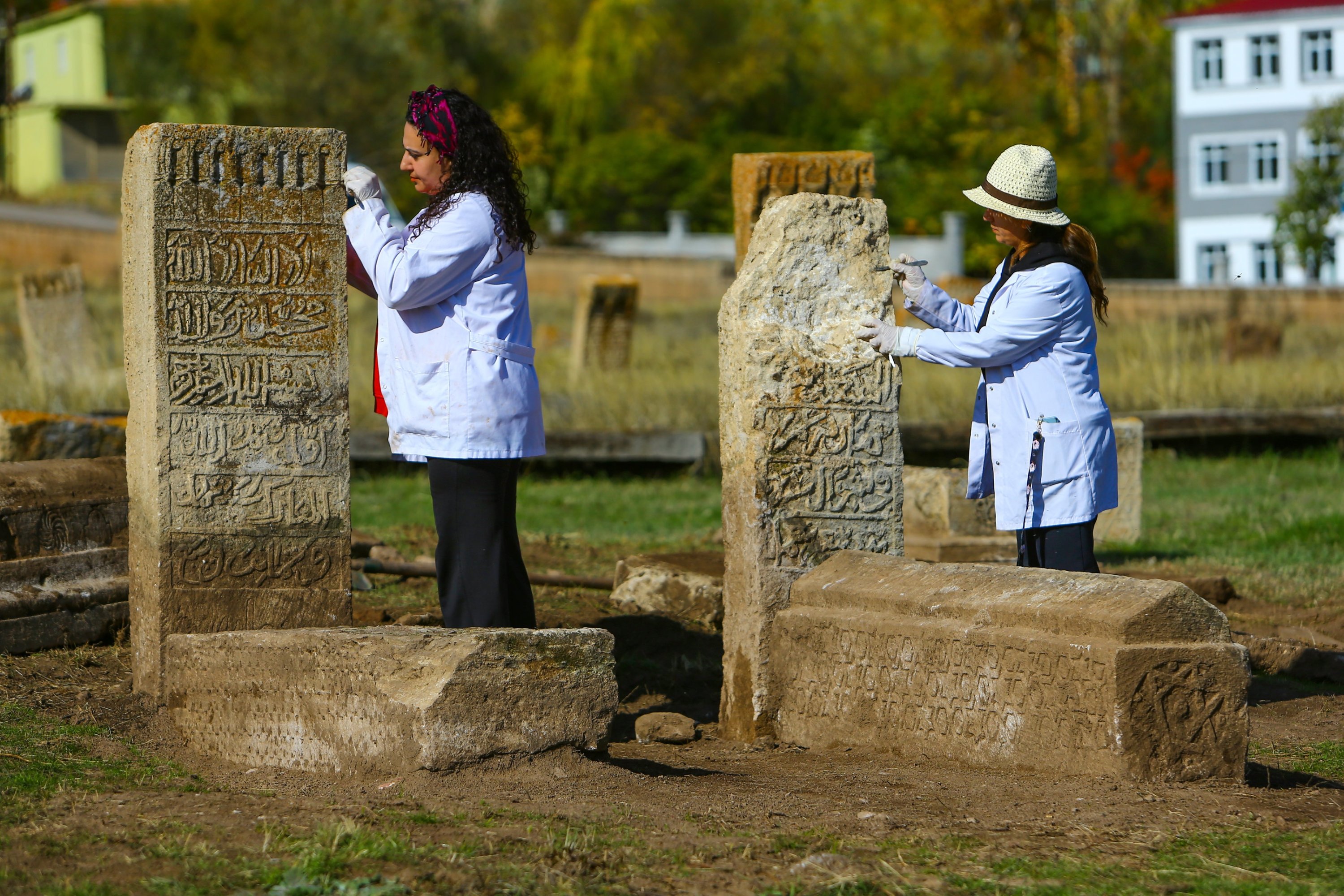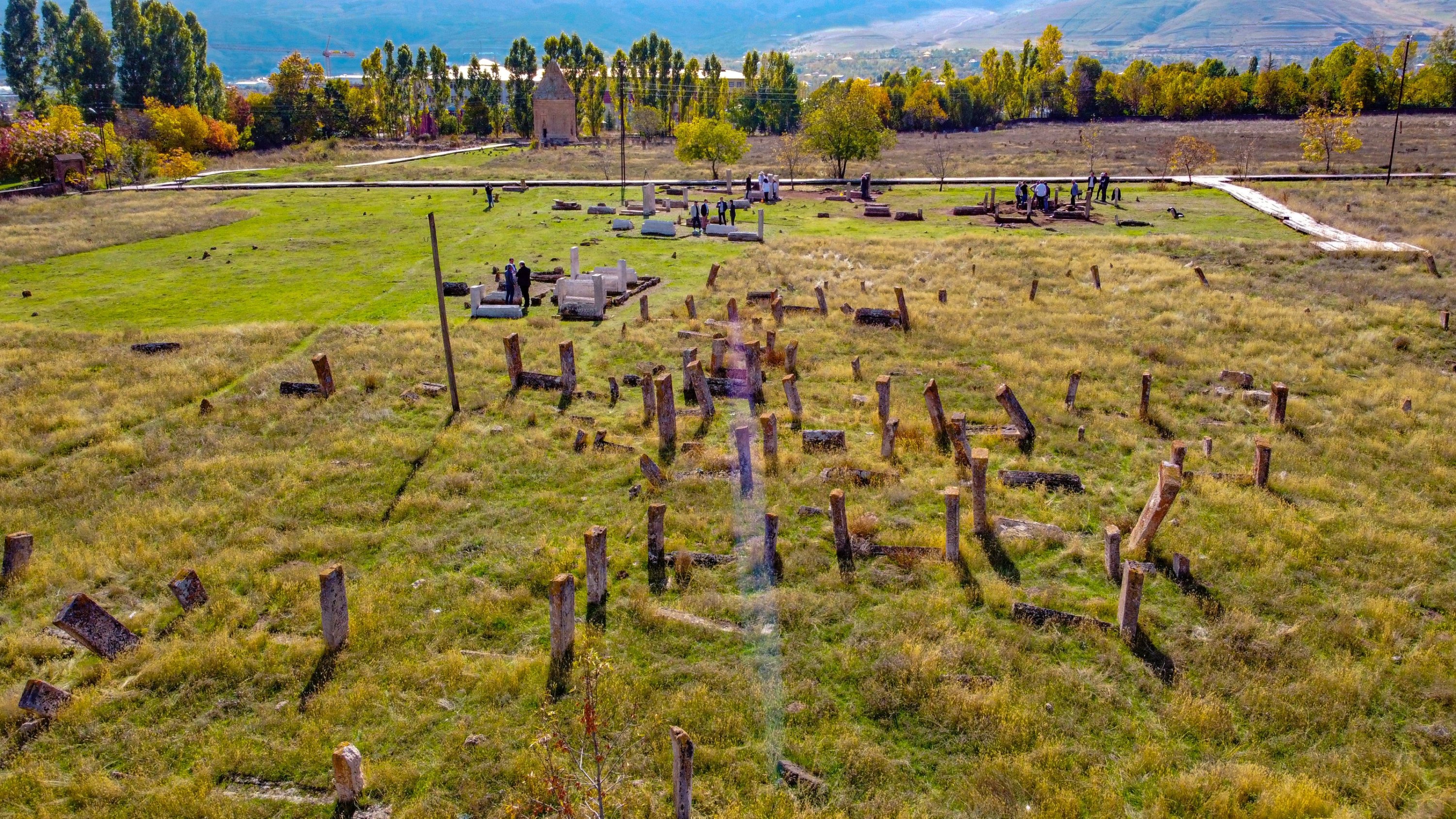© Turkuvaz Haberleşme ve Yayıncılık 2024
The excavation and restoration work carried out at the Seljuk Cemetery in the Gevaş district of eastern Türkiye's Van led to the discovery of eight "sanduka," a type of sarcophagi placed over the original graves of distinguished people in the Turkish-Islamic tradition.
Within the area that includes the Halime Hatun Tomb, built 700 years ago, one of the largest Turkish-Islamic cemeteries, excavation and restoration work began last year with the permission of the Ministry of Culture and Tourism.
The excavations, which were led by the Van Museum and supervised by Ercan Çalış, a faculty member of Yüzüncü Yıl University (YYU), involve specialized academics.

Çalış told Anadolu Agency (AA) that significant findings had been obtained during the excavations, identifying nearly 700 tombstones in the area. He explained that in this year's work; they had uncovered eight tombs buried under about a meter of soil.
"Tombstones will provide us with valuable information in terms of art, science, history and culture. These were not determined in previous works. New coffins were recorded by us for the first time. This shows us that this place is not limited to just 700 tombstones; the number will exceed 1000. When we unearthed the coffins from the soil, we saw that they preserved their original features. History, art and culture seemed to spring from the soil."
"The coffins and witnesses from 700 years ago had completely remained under the soil. Thus, the quality of the stone, its raw material, the motifs, and the inscriptions on it remained original. We think the cemetery will turn into an open-air museum in the near future," he said.

Çalış mentioned that they also carried out groundwork and restoration processes for leaning, falling and broken tombstones.
"We restore the stones to their original state. We clean them and reveal the motifs and inscriptions on the stones. Tombstones are important documents indicating that Van has been on Turkish soil for centuries. The Great Seljuks initiated the conquest movement from Iran and Iraq to Anatolia with the Battle of Malazgirt. The cemetery area corresponds to this period. We qualify this place as the Seljuk Cemetery because when you look at the style on the stones, you can see the best features of the Seljuks found in other settlements here," he continued.
